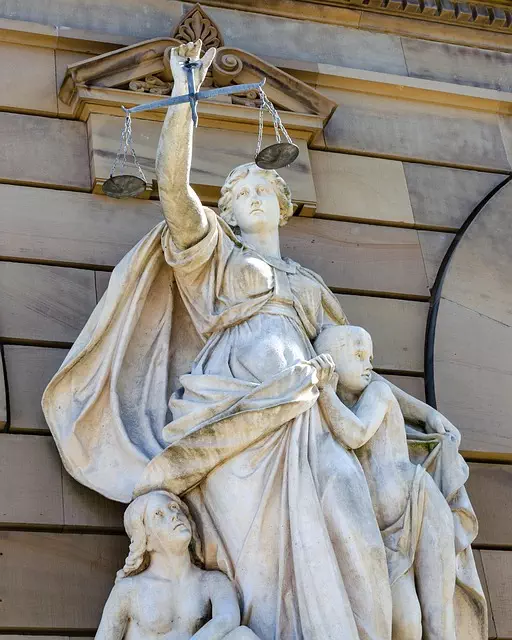In Queens and The Bronx, New York, slip and fall cases are governed by negligence principles, with property owners having a legal duty to maintain safe premises, especially during winter. Ice, snow, and unpredictable climate changes are common causes of accidents. Rideshare crash litigation is also significant in these areas due to the high volume of rideshare companies like Uber and Lyft. Victims must prioritize safety and gather robust evidence, including visuals, witness statements, and records, for successful compensation claims. Complex legal arguments hinge on understanding fault between drivers, passengers, and property owners, making specialized legal knowledge essential in The Bronx's unique rideshare litigation landscape.
In the icy grip of Queens, slip and fall accidents are more than just inconvenient—they can lead to severe injuries and significant financial burdens. Understanding your legal rights in these cases is crucial. This guide delves into New York’s legal framework for slip and fall liability, exploring common winter hazards, weather’s impact on safety, and the unique aspects of rideshare crash litigation in The Bronx. Learn how to build a compelling case and navigate complex legal processes to secure the compensation you deserve.
- Understanding Slip and Fall Cases in Queens: Legal Framework
- Common Causes of Winter-Related Premises Liability
- The Role of Weather Conditions in Slip and Fall Accidents
- Rideshare Safety and Passenger Responsibilities
- Building a Strong Case for Compensation: Evidence to Collect
- Navigating Rideshare Crash Litigation: The Bronx vs. Other Areas
Understanding Slip and Fall Cases in Queens: Legal Framework

In Queens, slip and fall cases are governed by a clear legal framework that establishes liability for property owners and businesses when visitors sustain injuries on their premises due to unsafe conditions. These cases often revolve around the principle of negligence, where plaintiffs must prove that the defendant had a duty to maintain a safe environment, breached that duty, and directly caused their harm. New York State law, including provisions specific to Queens, outlines strict standards for property maintenance and safety, especially in public areas and places of business.
Rideshare crash litigation in The Bronx, while unrelated to snow/ice slip and fall cases, shares some legal parallels. Both types of cases require a thorough understanding of liability, negligence, and the applicable law. In slip and fall cases, the focus is on the physical environment; in rideshare litigation, it’s on vehicle safety and driver responsibility. Each involves complex legal arguments and evidence to establish fault and secure justice for victims.
Common Causes of Winter-Related Premises Liability

In winter, property owners have a heightened duty to maintain safe premises due to the increased risk of slips and falls caused by snow and ice. Common causes of winter-related premises liability include inadequate snow removal, absence or poor condition of salt or sand for traction, and icy surfaces left untreated. These issues can lead to serious injuries, such as broken bones, head traumas, and sprains, which may require medical attention and prolonged recovery.
In The Bronx, rideshare crash litigation has become a significant concern during winter months. Drivers who are not accustomed to the season’s challenges may struggle with visibility and road conditions, leading to accidents. Property owners and businesses must be especially vigilant in ensuring safe entry and exit points for customers and visitors, as slips and falls can result in substantial legal liability.
The Role of Weather Conditions in Slip and Fall Accidents

In Queens, as in many regions with varying weather conditions, slip and fall accidents are often linked to unpredictable climate changes, particularly ice and snow accumulation. Weather plays a pivotal role in these incidents, especially during winter months when freezing temperatures transform sidewalks and roads into hazardous surfaces. Property owners and businesses have a legal obligation to maintain safe premises, which includes addressing icy or snowy conditions promptly. Failure to do so can lead to severe injuries for unsuspecting pedestrians, resulting in potential rideshare crash litigation, as drivers may also be at fault due to the reduced visibility and road safety risks.
The Bronx, with its diverse climate, requires vigilant attention to weather-related slip and fall cases. Icy sidewalks and roads can cause individuals to lose their balance and suffer falls, leading to compensation claims. Weather conditions, such as heavy snowfall or rapid temperature drops, often serve as key factors in these accidents. Therefore, both property owners and riders must exercise caution and be aware of the potential risks posed by mother nature, ensuring prompt action to mitigate these dangers.
Rideshare Safety and Passenger Responsibilities

In today’s digital age, ridesharing services have become a common mode of transportation in urban areas like Queens and The Bronx. While convenient, these trips are not without risks. In the event of a rideshare crash, understanding passenger responsibilities is crucial for any litigation that may arise.
Passengers have a duty to ensure their safety, which includes wearing seatbelts, adhering to vehicle regulations, and reporting any unsafe conditions to the driver or the rideshare company. For instance, if a slip and fall occurs due to ice or snow on the vehicle’s interior or exterior, passengers are expected to have taken precautions. Rideshare crash litigation in The Bronx often involves complex legal arguments regarding liability; establishing fault requires careful examination of both driver and passenger obligations.
Building a Strong Case for Compensation: Evidence to Collect

When building a case for compensation after a snow or ice slip and fall in Queens, gathering robust evidence is key to success. Documenting the incident with photos and videos—especially if there are visible signs of icy conditions—can serve as powerful visual proof. Additionally, collecting witness statements from bystanders who observed the fall can provide independent corroboration of your account.
In cases involving rideshare crashes in The Bronx, where weather conditions may play a significant role, it’s crucial to obtain access to transportation records, driver logs, and any maintenance reports related to the vehicle. These documents can help establish negligence by the property owner or rideshare company, especially if they failed to address known ice or snow hazards.
Navigating Rideshare Crash Litigation: The Bronx vs. Other Areas

Navigating Rideshare Crash Litigation in The Bronx differs significantly from other areas due to unique legal and logistical considerations. In The Bronx, rideshare companies like Uber and Lyft are increasingly common, leading to a higher volume of accidents and subsequent litigation. This heightened activity creates a specialized landscape for personal injury attorneys.
Compared to more suburban or rural regions, The Bronx’s dense population, busy streets, and complex traffic patterns contribute to a higher risk of accidents. As a result, rideshare crash cases in this area often involve more intricate investigations, including analysis of safety protocols, driver training records, and technological evidence like GPS data and dashcam footage. The competitive legal environment also demands a thorough understanding of local laws and regulations governing rideshare operations.
In Queens, understanding slip and fall cases within the legal framework is key. From navigating winter-related premises liability to collecting evidence for strong claims, residents affected by these incidents have rights. Specifically, rideshare crash litigation in The Bronx presents unique challenges and opportunities, emphasizing the importance of professional legal guidance. By familiarizing themselves with local regulations and gathering comprehensive evidence, victims can secure compensation and ensure justice.
